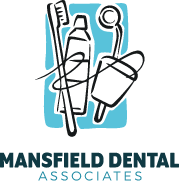It’s time to ‘fess up: Do you floss your teeth every day? More than 1 in 4 American adults lie to their dentists about how often they floss their teeth, according to a new national survey. Daily flossing is one of the best steps you can take to prevent gum disease, which is why it is alarming that many adults are failing to meet the recommended amount of flossing — and they’re lying about it to their dentists. Start your daily flossing routine and protect your gums from disease in a just a minute or two per day.
Flossing is Easy!
The same national survey that revealed how many patients are fibbing about their flossing also found that 36% of American adults would rather do an unpleasant activity, such as cleaning a toilet, than floss their teeth. Why the floss phobia? Flossing is actually easy, and it can be done fairly quickly. In just a minute or two, you could have flossing done for the day. Here are some tips on how to floss properly:
1. Cut a long piece of floss to work with, approximately 18 inches in length.
2. Wrap the floss around your middle and pointer fingers on each hand, then pull apart so the middle portion between your hands is taut.
3. Carefully use an up-and-down motion to floss between teeth. Gently floss around the gum line of teeth, too.
Flossing Tips
- You can use waxed or unwaxed floss. Both work with the same effectiveness, so it is simply personal preference which one you prefer.
- There is no best time to floss, so you can decide whether you’d prefer to floss in the morning or rather floss at night depending on your schedule.
- Should you floss first or brush first? This is another that’s up to personal preference, though some patients find they feel more incentive to do both when they floss first, before their mouth feels minty fresh and clean from brushing.
- Some minor bleeding is normal when you begin flossing, but be mindful of repeated bouts of bleeding and talk with your dentist if it seems abnormal.
Floss for Periodontal Disease Prevention
Flossing is a vital step to prevent gum disease. Gum disease, also called periodontal disease, begins as gingivitis, which is inflammation of the gums. When bacteria and food remnants accumulate around the gum line, the tooth becomes susceptible to cavities and the gums becomes irritated. Neglecting to clean the gum line and in between teeth can lead to gum disease and infection.





Recent Comments